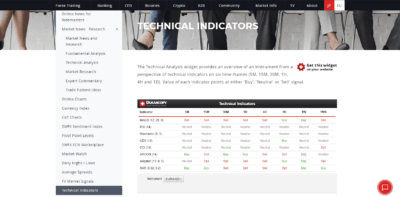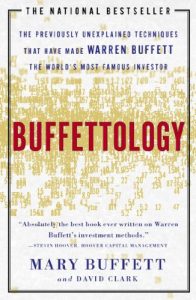Contents:

Section 3 characterizes fear of appreciation and documents its relative importance over time. Section 4 explores the economic implications of fear of appreciation, identifying links with the real exchange rate and economic growth, and examining alternatives channels that could account for the growth effect. Section 5 reviews alternative theoretical explanations for our findings, and concludes. The policy implications of unstable exchange rates remain a subject of great dispute. Refreshingly, this is not the usual debate between laissez-faire economists who trust markets and distrust governments, and interventionist economists with the opposite instincts.

She is a https://forexbitcoin.info/ therapist and transformational coach, with a special interest in helping women learn how to invest. Appreciation and depreciation can be caused by changes in the interest rate, trade, and speculation. To calculate depreciation, we will use dollars to euros as an example. To calculate appreciation, we will use dollars to euros as an example. Capital outflow and inflow can each cause currency depreciation and appreciation, respectively.
Price/Earnings Ratio (P/E Ratio)
Although this is higher than what it would cost if the exchange were made today, the importer does not have the cash available to make the trade today, and the forward contract would protect the importer from an even greater U.S. dollar depreciation. Anyone who has ever traveled to another country has probably had to deal with an exchange rate between two currencies. (I say “probably” because a person who travels from, say, Italy to Spain continues to use euros.) In a sense, exchange rates are very simple. However, despite their simplicity they never fail to generate confusion. To overcome that confusion this chapter begins by offering straightforward definitions and several rules of thumb that can help with these problems.

For example, in the United States, the dollar’s strength is often judged in relation to other currencies, such as the Japanese yen, the Swiss franc, and the euro. When a currency appreciates, it means it increased in value relative to another currency; depreciates means it weakened or fell in value relative to another currency. Devaluation causes inflation to rise, so companies find it more attractive to export. To counteract the effects, governments might increase interest rates to reduce the internal demand and might sell part of their reserves in foreign currency to stabilize the exchange rate. Exports become more attractive because producers get more money by selling to the international market. A devaluation might increase the production of certain products and stimulate economic growth.
Final Appreciation and Depreciation Quiz
From July 2005 through June 2013, the market wizards (series) appreciated by 34% on a nominal basis against the dollar and by 42% on a real (inflation-adjusted) basis. Over the past few years, China’s current account surplus has declined, and its accumulation of foreign exchange reserves has slowed—factors that have led some analysts to contend the RMB is not as undervalued against the dollar as it once was. In July 2008, China halted RMB appreciation because of the effects of the global economic crisis on China’s exporters.

This section examines a number of issues pertaining to the effects of China’s undervalued currency on the U.S. economy. The economic effects on the Chinese economy of an undervalued currency are examined later in the report. At the July 2013 S&ED session, China reiterated its commitment to move to a market-determined exchange rate. President Obama stated in February 2010 that China’s undervalued currency puts U.S. firms at a “huge competitive disadvantage,” and he pledged to make addressing China’s currency policy a top priority. This could raise the level of anti-dumping duties imposed on imports.
Depending on the elasticity of demand for the product, some might be willing to pay the extra price and buy the same level as before, some might buy less of the product, and some might stop purchasing the product altogether. China’s currency issue was also a major topic under the U.S.-China Strategic Economic Dialogue that was started under the Bush Administration in 2006. The U.S. federal budget deficit increased sharply in FY2008 and FY2009, causing a sharp increase in the amount of Treasury securities that had to be sold. During this period, while the Obama Administration pushed China to appreciate its currency, it also encouraged China to continue to purchase U.S. securities, which China did. The top five countries with the most undervalued currencies were Singapore (undervalued by 25.7%), Taiwan (18.8%), Sweden (13.4%), Japan (13.1%), and Switzerland (10.8%); China ranked ninth. China and a number of other G-20 members, though supporting efforts to rebalance the global economy, opposed the idea of using numerical targets.
Examples of Currency Appreciation and Depreciation
In addition, there would be a lag time in terms of the effects of an appreciated RMB on prices of Chinese products, since prices for many exports are set several months ahead of time in contracts. If an appreciated currency lowered prices for U.S. products, it could take time for increased Chinese demand to be signaled to U.S. producers and exporters and for them to boost production to meet the new demand. An appreciated RMB could actually worsen the U.S. trade deficit in the short run if the volume of imports from China did not decline at the same rate that prices increased (the so-called J-Curve effect). It would take time for U.S. consumers of higher-priced Chinese products to find lower-priced (non-Chinese) products or other alternatives and thus reduce overall demand for Chinese imports. The mercantilist view that exchange rate policy – more precisely, a temporarily undervalued currency – could be used to protect infant industries as a development strategy has a long tradition in economic theory and have recently enjoyed a minor revival. More recently, the effects of overvaluation have been invoked to explain the “Dutch disease” effect of foreign aid or the disappointing growth dividends of financial integration (see Prassad et al., 2007).
Finally, it is important to emphasise that approximately 25% of the 302 giant discoveries between 1970 and 2013 were made by nine countries in this sample leaving us with enough variation for identification. To explore the reallocation channel we focus on countries that were OECD members by 1973. Between 1970 and 2013, 302 giant discoveries were made in 56 countries. The average and median size of discoveries is 67% and 10% of GDP, respectively.
In comparison, the nominal percentage change in the yuan/dollar exchange rate over these periods was 9.6% and 1.3% . Some have concluded that Chinese controls on bank interest rates have dampened the level of household spending/consumption that would have been expected, given the rapid rate of China’s economic growth. Another major objective of various recent currency bills is to eliminate current provisions of U.S. trade laws that require the Treasury Department to identify countries that intentionally “manipulate” their currency.
Altering the sectoral specification by moving agriculture to the traded sector or considering only services as the non-traded sector does not affect our results. 2011) with a generic approximated oil production profile, the nominal oil price at the date of discovery and a country specific interests rate to discount future revenues. They normalise the resulting value on nominal GDP measured at the date of discovery. Others in Congress, however, continue to view the large and growing U.S. trade deficit with China, and the loss of U.S. manufacturing jobs, to be largely caused by China’s currency manipulation. Some recent media reports indicate that data on the level of Chinese exports in 2013 may be overstated because some entities in China may be filing fake export invoices in order to transfer capital to China.
Forex traders often talk about one currency ‘strengthening’ in relation to another, meaning that it would cost more to buy, or that it can buy more of another currency when sold. When they firstly invested, the rupiah exchange rate was IDR14,000/USD. And, when realizing capital gains, the exchange rate is at IDR 12,000 / USD. If the rupiah is constant, investors will only get USD8.57 (120,000/14,000). However, because the rupiah appreciates, investors get USD10 (120,000/12,000).
This will cause the currency to appreciate, or become more valuable, relative to other foreign currencies. Exchange rate depreciation is when the value of your country’s currency goes down in relation to the value of other currencies with which it is in the floating exchange rate regime. Exchange rate appreciation is when the value of your country’s currency goes up in relation to the value of other currencies with which it is in the floating exchange rate regime.
Treasury securities as of May 2013, making it the largest foreign holder of such securities. Economists generally oppose the use of policies that interrupt market forces and distort the most efficient distribution of resources. A fixed or managed float exchange rate whose level is not adjusted when economic conditions change might be viewed as such a distortion.
Consequently, demand for American goods will increase and the dollar will appreciate. When a currency appreciates or strengthens , there are many effects on you and the economy. With exports becoming more profitable, the local industries may not feel the need to cut costs or become more efficient, so over time, their costs increase. The appreciation of the Euro posed a great challenge for the slowest economies in the region. In countries like Portugal, Greece, and Spain, many local industries can no longer compete in the international market. Appreciation is an increase in the value of a currency when compared to others.
An undervalued currency makes imports more expensive, hurting Chinese firms that import parts, machinery, and raw materials. Such a policy, in effect, benefits Chinese exporting firms at the expense of non-exporting Chinese firms. This may impede the most efficient allocation of resources in the Chinese economy.
When several Colombian coffee producers were going out of business because of low international coffee prices, the government devalued the peso, so producers earned more pesos for their crops. However, productivity didn’t grow, inflation rose, and gradually, the positive effect weakened. Investor sentiment heavily influences the supply and demand for a currency on the open market, which are perhaps the largest drivers behind whether a currency appreciates or depreciates. The currencies which are most susceptible to influence by supply and demand are those that operate on a floating exchange rate. They include the trade balance, interest rates, capital flows, inflation, monetary and fiscal policy, speculation, and political stability.
Jonathan Okamura: Hawaii’s Brain Drain Is Getting Worse. It’s … – Honolulu Civil Beat
Jonathan Okamura: Hawaii’s Brain Drain Is Getting Worse. It’s ….
Posted: Mon, 06 Mar 2023 08:00:00 GMT [source]
If Americans loved French products, the exchange rate would still stay the same and result in the US with a balance of payment deficit. Most historians and economists also think the gold standard was one of the key causes for the economic collapse during the Great Depression. Now, we no longer use the gold standard, but it’s worth noting that we once did. When the exchange rate decreases, it is less expensive to purchase currency. Appreciation occurs due to different reasons, including an increase in demand or fluctuation and growth of interest rates. In accounting, appreciation refers to an upward movement of a company’s asset value in their accounting books.
- This is because of its historic neutrality in wars and tendency towards political stability and relatively free monetary policy; as well as its openness to foreign investment.
- The RMB became largely convertible on a current account basis, but not on a capital account basis, meaning that foreign exchange in China is not regularly obtainable for investment purposes.
- Thus the value of a quart of milk is given in dollars, not in quarts of milk.
- The current global economic slowdown led to a sharp reduction in U.S.-China trade in 2009; both U.S. exports to and imports from China fell sharply, though imports fell at a bigger rate.
- A lower or weak exchange rate can have the opposite effect as a strong exchange rate or currency.
- Such preference asymmetry in intervention seems to have been driven by the urge to maintain the level of reserve at an optimal level dictated by certain reserve adequacy metrics.
China was cited as a currency manipulator five times by Treasury from May 1992 and July 1994 over such issues as its dual exchange rate system, periods of currency devaluation, restrictions on imports, and lack of access to foreign exchange by importers. None of the solutions guarantee that the bilateral trade deficit would be eliminated. China is a country with a high saving rate, and the United States is a country with a low saving rate; it is not surprising that their overall trade balances would be in surplus and deficit, respectively. As the Appendix discusses, many economists believe that these trade imbalances will persist as long as underlying macroeconomic imbalances persist.
